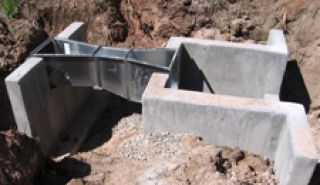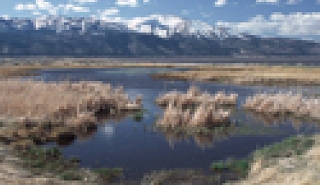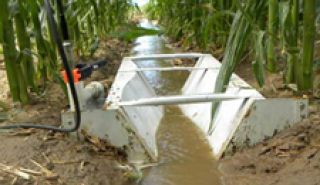The three most common devices used to measure water rights are: Parshall flumes, V-notch weirs, and Cutthroat flumes respectively. But this doesn’t mean that other devices are used or aren’t suitable for measuring water right flows!
For applications where the flow of water is relatively constant and the channel the channel width is restricted, a rectangular weir (with or without end contractions) may be a better fit. This is particularly true in areas with stoney soiils or large amounts of rocks (makign the installation of a flume difficult / expensive). Likewise, in applications where the width of the channel is constricted or where the upstream channel banks are relatively short, the higher flow rates offered by rectangular weirs may make them better suited to measuring flows than traditional V-notch weirs.

In applying rectangular weirs, beyond the usual requirements for proper weir pool development, there is a need to ensure that the nappe (the flow of water over the weir’s crest) stays aerated. The need for nappe aeration is frequently overlooked or underestimated when applying rectangular weirs – particularly those without end contractions. Under aeration of the nappe can result in the nappe clinging to the downstream face of the weir intermittently or on a continual basis depending upon the shape of the channel and the head passing over the nappe.

Aeration is of the nappe is most common accomplished by placing air vents on each side of the weir opening and ending them under some portion of the nappe itself.







